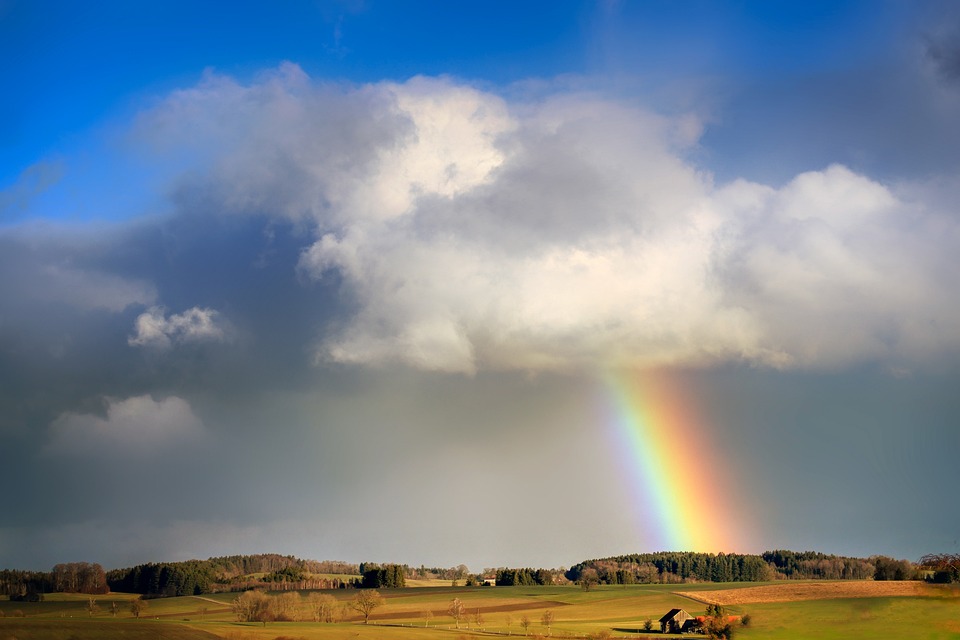Title: Marine Marvels: Strange Habitats and Creatures in the Depths of Earth’s Oceans
Introduction
In the vast, mysterious ecosystem of Earth’s oceans, beneath the deceptively serene surface, lies a world of strange and fascinating creatures, thriving in peculiar and inhospitable environments that would be impossible to find on dry land. Welcome to the hidden underwater world, where life has adapted to unique conditions that challenge our conventional understanding of what it means to live.
1. Hydrothermal Vents: Discovering Ecosystems Built Around Extreme Heat
In the most extreme conditions, you’ll find hydrothermal vents, gushing out superheated water infused with minerals and chemicals that support complex, thriving ecosystems. Home to resilient animals like giant tube worms that can reach up to nine feet in length, these creatures rely on symbiotic bacteria in their bodies to convert the chemicals into energy, an entirely different food chain strategy than what we’re used to on land.
Image: Interactive 3D model of a hydrothermal vent ecosystem, featuring giant tube worms, vent crabs, and other heat-resistant species. (Click to zoom and rotate)
2. Abyssal Plains: Exploring the Darkest Depths of Our World
Moving deeper into the ocean, the abyssal plains bathe in eternal darkness, with temperatures just above freezing and immense pressure. Here, life is sparse but unique, as creatures like the Deepsea hatchetfish use bioluminescence to attract mates and deter predators.
3. Polynyas: Uncovering the Secrets of These Ice-Free Oases in the Southern Ocean
In the otherwise uniform blanket of sea ice, polynyas provide rare, ice-free habitats, teeming with life during winter months. Dense aggregations of krill provide plentiful feeding grounds for seals, whales, and even penguins. These open water refuges have birthed fascinating adaptations in species like the Weddell seal, which uses its flippers and hindlimbs to pull itself onto solid ground from underwater entrances.
4. The Mariana Trench: Delving Into the Deepest Point on Earth
The deepest place on Earth, the Challenger Deep in the Mariana Trench, is a staggering 36,000 feet below sea level. At these depths, pressure is over a thousand times that at the surface, and it’s cold, dark and virtually inaccessible. This extreme environment has prompted unique survival strategies, such as the snailfish, which uses elasticized bones and blood rich in oxygen-binding proteins to adapt.
5. Ice Shelves: Chemistry Behind the Frozen Frontiers
Sea ice plays an important role in Earth’s climate system, but there’s more to it than meets the eye. Hidden beneath the thick layers, mixtures of briny water and marine sediments create a unique ecosystem, home to an array of organisms that have adapted to survive in subfreezing temperatures and high salt concentrations.
6. Seamounts: Colliding Plates Create Underwater Mountains of Life
Submerged extinct volcanoes or uplifted seafloor, seamounts, elevate the surrounding waters, creating varied habitats that teem with life. On and around these underwater mountains, a whole host of unique organisms thrive, from sponges to anemones, starfish to deep-sea corals.
7. Seagrass Meadows: Oxygen Oases in the Ocean
The shallow, sunlit depths of coastal waters harbor unique underwater meadows of seagrass, providing essential habitats for innumerable marine species. Sea turtles feed on the seagrass, while fish, crabs, and other marine creatures use these oxygen-rich environments as breeding grounds for their offspring.
8. The Dead Zone: A Struggle for Survival Amid Declining Oxygen Levels
The Gulf of Mexico’s ‘Dead Zone’ is an area with oxygen levels too low to support most marine life. This phenomenon, caused by the excessive influx of agricultural and sewage runoff, results in mass fish die-offs, leading to food shortages for larger fish and sea mammals. Understanding this anomaly highlights the importance of balanced ecosystems.
9. Floating Islands: A Biofilm’s Fantastical Habitat
Bacteria and algae create floating biofilms that can grow on any surface that provides enough sunlight. These biofilms provide a unique habitat for a range of invertebrates, that adapt to living on this moving platform. Biologists are keenly studying these environments as they can offer insights into early life on our planet.
10. Coral Reefs: Time Capsules of Underwater History
Dissolving carbonate reefs offer an insight into Earth’s ancient past. The intricate structures built by tiny organisms hold a wealth of information about our planet’s evolutionary history, providing interesting clues to how marine life evolved over time.
(Image: A spectacular panoramic photo of a lively, vibrant coral reef system encrusted with diverse, exotic organisms)
FAQs About Marine Marvels
Q: What is bioluminescence?
Bioluminescence is the production and emission of light by living organisms as a result of a chemical reaction.
Q: How do hydrothermal vent ecosystems survive without sunlight?
The creatures at hydrothermal vents rely on chemosynthetic bacteria, which produce energy by utilizing chemicals in the vent water, providing a food source for other organisms.
Q: Why are abyssal plains important?
Abyssal plains harbor unique marine life found nowhere else on Earth. They also play an important role in delivering nutrients to shallow waters, supporting the complex and vibrant marine ecosystems above.
Q: Are polynyas common?
Polynyas are relatively rare due to the freezing temperatures required to create them, but they play a significant role in oceanic ecosystems and environments.
Q: How can we help preserve these unique marine habitats?
The conservation and protection of these spectacular habitats is achieved by mitigating human impacts such as overfishing, pollution, and addressing climate change. Participation in citizen science projects can also play a role in their study and preservation.
(Conclusion)
In the awe-inspiring depths of Earth’s oceans, numerous intricate ecosystems have evolved to survive and thrive. From the strikingly beautiful coral reefs to the harsh, accommodating environments at hydrothermal vents, our understanding of these ‘Marine Marvels’ continues to change as we delve deeper into these mysterious underwater worlds. As we continue exploring, we are reminded not only of the incredible adaptations of marine life but also of the fragile balance that sustains them. Late-Twentieth Century Oceanography: The Journey Continues



